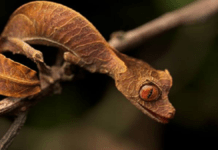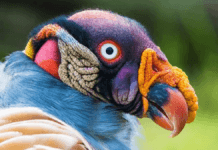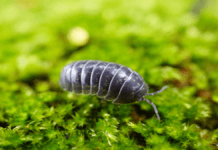Today, I’m going to tell you about the most beautiful Giant Squirrel in the world. Sometimes you may have heard about it. Sometimes you may not. However, in this article, I bring you all the facts you must know about this beautiful giant!
Who is this giant squirrel?
The name of this giant squirrel is the Indian Giant Squirrel. The scientific name of this species is “Ratufa Indica”. This is a native species to India. This little creature can be found in the Satpura hill range of Maharashtra and Madhya Pradesh. It is also known as Malabar Giant Squirrel. These squirrels are also called by different local names. “Malayannan” in Malayalam, “Malai-anil” in Tamil, “Vishal Gilahari” in Hindi, and “Shekru” in Maharashtra are some of those names.
What do they look like?

According to John Koprowski, a squirrel expert, this squirrel looks too large to be a squirrel and it is more like a primate. Usually, an Indian Giant Squirrel weighs around 1.5-2 kg, and the length of its body is around 25-45 cm. these creatures have different color patterns with shades of deep red, black and brown. The body color of these rodents’ fur is really unique and it can be maroon, purple, orange, brown, or black. And also they have dirty white or cream-colored patches on their belly, forelimbs, and under-parts. These unusual colors help these giant squirrels to survive predators in the wild. In shaded dense forests, these Indian Giant Squirrels can remain without detection because of patchy colors and dark hues.
And also these beautiful creatures have beautiful pink noses and lips. Their eyes are colored in light or bright dark brown. These squirrels also have long hair behind the nose and the mouth. They have long and powerful tails colored in light brown with a creamy white colored tip. You cannot differentiate male and female ones simply as both males and females look alike. But female Indian Giant Squirrels have three sets of mammae.
How about their mating habits and distribution?
Usually, these Malabar Giant Squirrels are solitary animals. During mating periods, they live in pairs. These creatures are active in the early morning and in the evening. During the rest of the day, they usually rest in tree holes or nests created by them. These squirrels construct globe-shaped large nests in trees using leaves and twigs. Usually, each squirrel builds 2-5 nests within a small territory. They build one of those nests especially for producing and nursing their babies. They use other nests only as sleeping sites. These squirrels are also able to take leaps up to 6 meters while traveling among trees as they are very agile animals.

The reproductive behavior and habits of these squirrels are not sufficiently explored yet. But male giant squirrels are known as they compete for their mating rights. Usually, breeding pairs remain long time period together. These squirrels sometimes breed once a year and sometimes breed several times per year. Their gestation period lasts around 28-35 days and at the end of that gestation period, female ones deliver 1-3 young squirrels. The parents nurse their young ones in the nests located on tree branches and after a while, they release the young ones out of the nest and then they become independent.
Are there any subspecies of the Indian Giant Squirrel?
There are four different subspecies of Indian Giant Squirrel that spread across the southern and central states. They are as follows.
- Raufa indica indica
This subspecies can be best seen in Tamil Nadu and Nilgiris. They have maroon color in their back and a pale-colored faces and a tails.
- Ratufa indica centralis
This one can be best seen in Satpura and Madhya Pradesh. It is smaller than Raufa indica indica and has a darker tail rather than a pale-colored one.
- Ratufa indica maxima
This one has a dark shoulder, tail, and rump. Simply this is the larger version of Ratufa indica centralis and these can be best seen in Kerala.
- Ratufa indica dealbata
This is the rarest subspecies of Raufa indica. This one has pale brown-colored fur and a creamy whitish tail. It can be hardly spotted now in Gujarat.
Any idea about their diet and population threats?

When talking about the meal pattern of these Malabar Giant Squirrels, they are omnivorous animals. They consume a large variety of food items including nuts, eggs of birds, barks, flowers, fruits, and insects. By today, their natural habitats are being degraded due to several reasons. Dam construction, clear felling, selective logging, and monoculture plantation are some of those reasons. Not only that but also these Malabar Giant Squirrels are being hunted for food in the Eastern Ghats throughout their habitat due to development in urban areas.
According to IUCN, This Malabar Giant Squirrel is a widespread and common animal species. But their overall population estimation is not available yet. However, according to the resources of Pune Mirror, there are around 1,800-1,900 individual giant squirrels in Maharashtra. Even though these squirrels are classified as the least concerned, the number of their population is decreasing day by day. There are lots of benefits to the ecosystem from these squirrels as they feed upon a large variety of plants and act as seed dispersers.

















